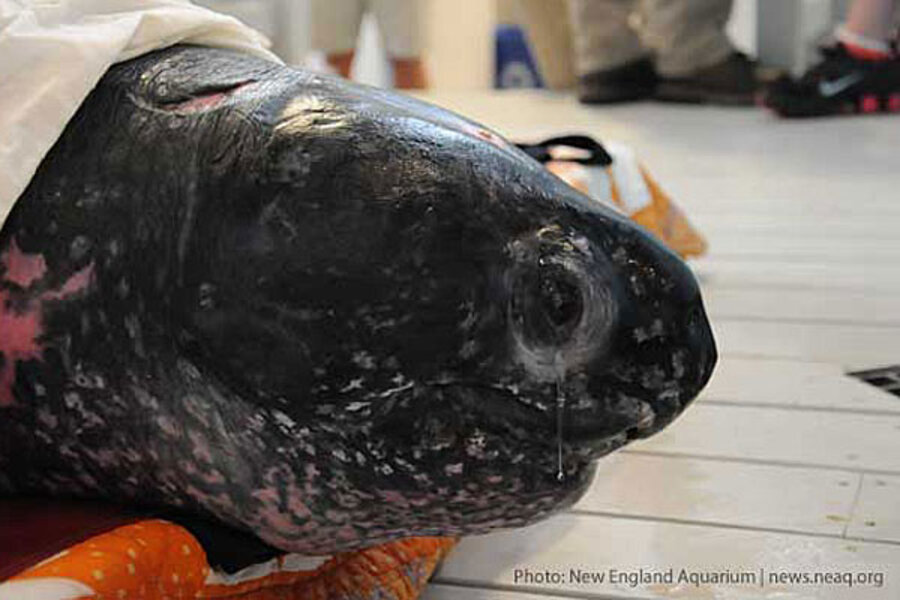Giant 655-pound leatherback turtle rescued and released
Loading...
| Harwichport, Mass., and Marathon, Fla.
The New England Aquarium in Boston say it's released a 7-foot-long (2.1-meter-long), 655-pound (297-kilogram) leatherback sea turtle back into waters off Cape Cod after it was treated for dehydration, trauma, and shock.
The turtle was found stranded near the tip of the Cape Thursday. Experts at the aquarium say the male turtle was underweight (adult males typically weigh 1,000 pounds) and lethargic, and a large portion of its left front flipper was missing because of some kind of trauma.
Veterinarians treated it, and aquarium officials say the turtle regained its strength, and they released it off Harwichport on Saturday.
RECOMMENDED: Are you scientifically literate? Take the quiz
Leatherback sea turtles are endangered and the largest reptile in the world. Experts treated the turtle using information obtained from research on leatherbacks that were briefly captured over the past few summers off Cape Cod.
Leatherbacks migrate up the East Coast each June to feed on abundant sea jellies (jellyfish) in Massachusetts waters, particularly around the Cape and the Islands. They will migrate south for the winter in September and October, according to the New England Aquarium.
Hawksbill sea turtled airlifted from Virgin Islands
In other turtle rescue news, a female hawksbill sea turtle airlifted from the U.S. Virgin Islands to the Florida Keys-based Turtle Hospital was recovering Saturday and producing eggs, officials said.
The turtle, named Good Hope after the beach in St. Croix where she was discovered, has laid 55 eggs since arriving at the hospital in Marathon on Sept. 1.
Hospital manager Bette Zirkelbach said X-rays revealed more eggs were being produced, indicating that the turtle has been responding to antibiotics, wound care, and physical therapy.
Some 47 eggs deemed "viable" were incubated, nestled in beach sand shipped from St. Croix, she said.
"Good Hope would have laid (eggs) on Good Hope beach in St. Croix, with that St. Croix sand," said Zirkelbach. "And those hatchlings would have come out and the first thing they would have contact with is St. Croix sand."
It can't be determined if the eggs are fertile, however, until the traditional 60-day gestation period ends.
The endangered hawksbill's continued improvement is good news to hospital director Richie Moretti, who founded the veterinary facility dedicated solely to the treatment of sea turtles more than 25 years ago.
"When 'Good Hope' came to the Turtle Hospital, it looked like we might have to amputate her front flippers," Moretti said. "But she's getting stronger and stronger every day."
With the turtle seemingly no longer in danger of dying, hospital staff is now trying to preserve the vision in the reptile's swollen eyes.
Good Hope was found severely injured Aug. 24 after tropical storm Isaac brushed St. Croix. Officials believe the animal was repeatedly gaffed in the front flippers, perhaps to remove fishing gear.
A Virgin Islands veterinarian treated her for a week before local fish and wildlife officials decided to send the animal on an American Airlines jet to the Turtle Hospital for treatment.
RECOMMENDED: Are you scientifically literate? Take the quiz
___
Copyright 2012 The Associated Press.







